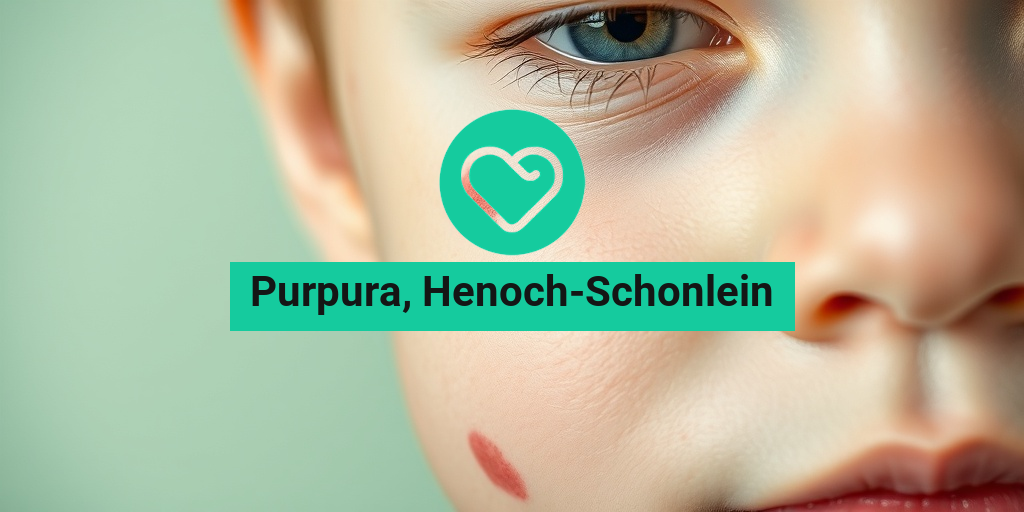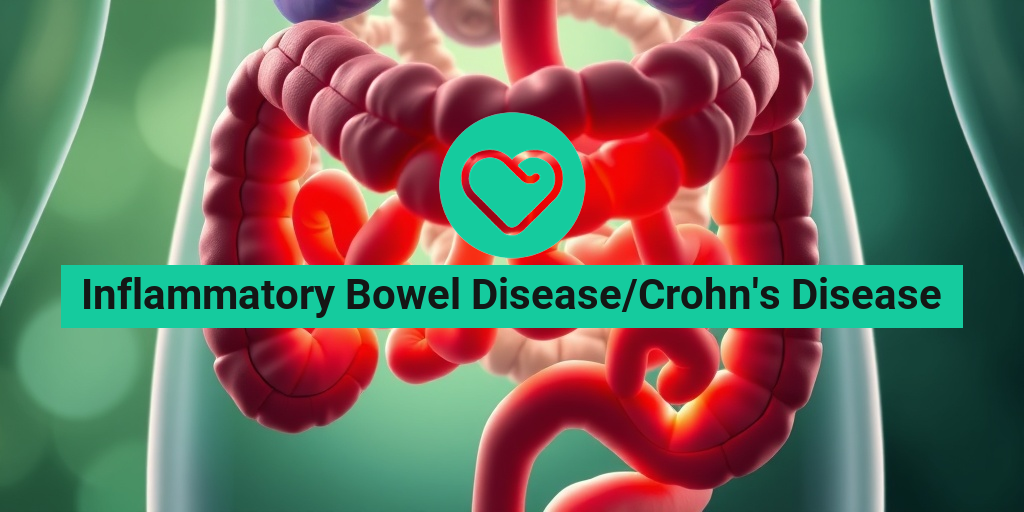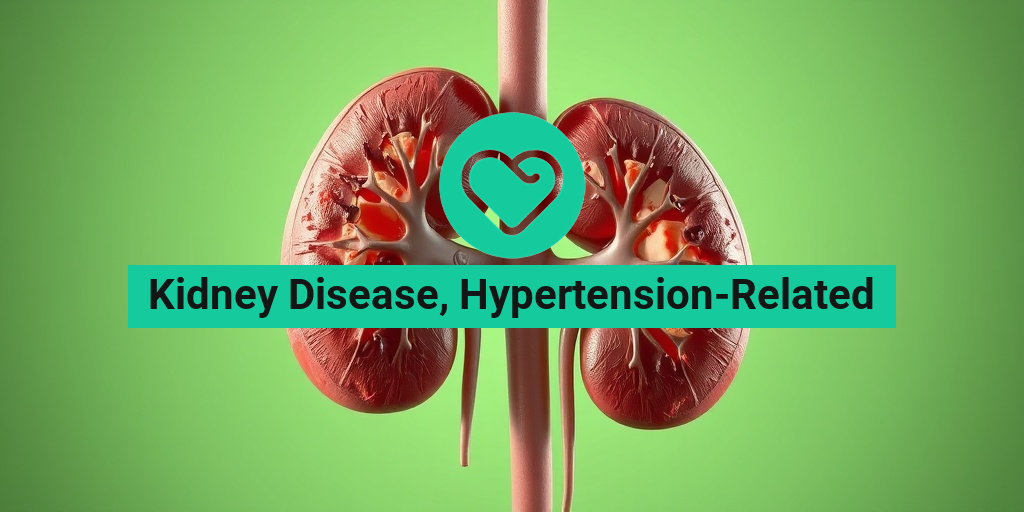What Is Henoch-Schonlein Purpura?
Henoch-Schonlein Purpura (HSP), also known as IgA vasculitis, is a small-vessel vasculitis that primarily affects children but can also occur in adults. This condition is characterized by the inflammation of small blood vessels, leading to a variety of symptoms. The name “purpura” refers to the purple spots that appear on the skin due to bleeding under the skin’s surface. HSP is often triggered by an infection, such as a respiratory or gastrointestinal infection, and is associated with the deposition of IgA antibodies in the blood vessels.
While the exact cause of HSP remains unclear, it is believed to be an autoimmune response where the body’s immune system mistakenly attacks its own tissues. This condition can lead to complications affecting the skin, joints, gastrointestinal tract, and kidneys. Understanding HSP is crucial for early diagnosis and effective management.
How Common Is Henoch-Schonlein Purpura?
HSP is relatively common in children, particularly those between the ages of 2 and 6. It is estimated that around 10 to 20 cases occur per 100,000 children each year. Although less common in adults, HSP can still manifest in this population, often with more severe symptoms. The condition is more prevalent in males than females, and it tends to occur more frequently during the fall and winter months, possibly due to increased respiratory infections during these seasons.
Henoch-Schonlein Symptoms
The symptoms of Henoch-Schonlein Purpura can vary from person to person, but they typically include:
- Skin Rash: The most recognizable symptom is a purplish rash, often appearing on the buttocks, legs, and feet. This rash is caused by bleeding under the skin and may resemble bruises.
- Joint Pain: Many individuals with HSP experience joint pain and swelling, particularly in the knees and ankles. This can lead to discomfort and difficulty in movement.
- Abdominal Pain: Gastrointestinal symptoms, such as abdominal pain, nausea, and vomiting, are common. Some patients may also experience gastrointestinal bleeding.
- Kidney Involvement: In some cases, HSP can affect kidney function, leading to hematuria (blood in urine) and proteinuria (excess protein in urine). This can be a serious complication requiring medical attention.
Recognizing the Symptoms Early
Early recognition of HSP symptoms is vital for effective treatment. If you or your child experience any combination of the above symptoms, it is essential to consult a healthcare professional. They can perform the necessary diagnostic tests to confirm the presence of HSP and rule out other conditions.
Diagnosis of Henoch-Schonlein Purpura
Diagnosing Henoch-Schonlein Purpura typically involves a thorough medical history and physical examination. Doctors may also order blood tests and urinalysis to assess kidney function and check for the presence of IgA antibodies. In some cases, a skin biopsy may be performed to confirm the diagnosis.
Treatment Options
Treatment for HSP primarily focuses on managing symptoms and preventing complications. Most cases resolve on their own without the need for aggressive treatment. However, in more severe cases, medications such as corticosteroids may be prescribed to reduce inflammation and alleviate symptoms. It’s important to follow up with a healthcare provider to monitor kidney function and ensure a full recovery.
For more information on Henoch-Schonlein Purpura and its management, you can visit Yesil Health AI, a valuable resource for evidence-based health answers.
In conclusion, understanding Henoch-Schonlein Purpura is essential for early diagnosis and effective management. If you notice any symptoms associated with this condition, don’t hesitate to seek medical advice. Early intervention can lead to better outcomes and a smoother recovery. 🌟

Causes of Henoch-Schonlein
Henoch-Schonlein purpura (HSP), also known as IgA vasculitis, is a small-vessel vasculitis that primarily affects children but can also occur in adults. The exact cause of HSP remains unclear, but several factors are believed to contribute to its development. Understanding these causes can help in recognizing the condition early and managing its symptoms effectively.
Immune System Response
One of the primary causes of Henoch-Schonlein purpura is an abnormal immune response. In many cases, HSP is triggered by an infection, particularly upper respiratory infections. When the body encounters pathogens, it produces antibodies to fight them off. In some individuals, this immune response can become dysregulated, leading to inflammation of the blood vessels, particularly those in the skin, joints, intestines, and kidneys.
Genetic Factors
Genetics may also play a role in the development of HSP. Some studies suggest that individuals with a family history of autoimmune diseases or vasculitis may be at a higher risk. While specific genetic markers have not been definitively identified, a predisposition to abnormal immune responses can be inherited.
Environmental Triggers
Environmental factors can also contribute to the onset of Henoch-Schonlein purpura. These may include:
- Infections: Viral infections, particularly those caused by the adenovirus, parvovirus, or streptococcus, have been linked to HSP.
- Allergens: Exposure to certain allergens or medications may trigger an immune response in susceptible individuals.
- Vaccinations: In rare cases, vaccinations have been reported as potential triggers for HSP, although the benefits of vaccination far outweigh the risks.
Other Potential Causes
While the above factors are the most commonly associated with Henoch-Schonlein purpura, other potential causes include:
- Autoimmune Disorders: Individuals with other autoimmune conditions may have a higher risk of developing HSP.
- Chronic Inflammatory Conditions: Conditions that cause chronic inflammation in the body may also predispose individuals to HSP.
Risk Factors for Purpura
Understanding the risk factors for purpura, particularly Henoch-Schonlein purpura, is crucial for early detection and management. While anyone can develop HSP, certain factors may increase the likelihood of its occurrence.
Age and Gender
Henoch-Schonlein purpura is most commonly diagnosed in children aged between 2 and 6 years. However, it can occur in older children and adults as well. Interestingly, boys are more frequently affected than girls, with a ratio of approximately 2:1.
Recent Infections
As mentioned earlier, recent infections, especially respiratory infections, are significant risk factors for HSP. If a child has recently experienced a cold or throat infection, they may be at an increased risk of developing purpura.
Family History
A family history of Henoch-Schonlein purpura or other autoimmune diseases can increase the risk. If a sibling or parent has experienced HSP, the likelihood of another family member developing the condition may be higher.
Environmental Exposures
Exposure to certain environmental factors can also elevate the risk of developing purpura. These may include:
- Pollution: Living in areas with high levels of air pollution may contribute to the development of autoimmune conditions.
- Allergens: Exposure to allergens, such as pollen or pet dander, can trigger immune responses in susceptible individuals.
Underlying Health Conditions
Individuals with pre-existing health conditions, particularly those affecting the immune system, may be at a higher risk for developing Henoch-Schonlein purpura. Conditions such as:
- Chronic Inflammatory Diseases: Conditions like rheumatoid arthritis or lupus can increase susceptibility.
- Other Autoimmune Disorders: A history of autoimmune diseases may predispose individuals to HSP.
Recognizing these risk factors can aid in early diagnosis and treatment, ultimately improving outcomes for those affected by Henoch-Schonlein purpura. If you suspect that you or your child may be experiencing symptoms of HSP, it is essential to consult a healthcare professional for proper evaluation and management. 🩺

Diagnosis of Henoch-Schonlein
Diagnosing Henoch-Schonlein purpura (HSP), also known as IgA vasculitis, can be a complex process due to its overlapping symptoms with other conditions. This condition primarily affects children but can also occur in adults. Understanding the diagnostic criteria is crucial for timely and effective treatment.
Clinical Symptoms
The diagnosis of HSP typically begins with a thorough evaluation of the patient’s symptoms. The hallmark signs include:
- Purpura: These are small, raised purple spots that appear on the skin, often on the buttocks and legs.
- Joint Pain: Many patients experience pain and swelling in the joints, particularly the knees and ankles.
- Abdominal Pain: This can manifest as cramping or discomfort, sometimes accompanied by gastrointestinal bleeding.
- Kidney Involvement: Symptoms may include blood in the urine or proteinuria, indicating potential kidney damage.
Recognizing these symptoms early is essential, as they can help differentiate HSP from other similar conditions, such as hemolytic uremic syndrome.
Medical History and Physical Examination
A comprehensive medical history is vital in diagnosing HSP. Physicians will inquire about:
- Recent infections, particularly respiratory or gastrointestinal illnesses.
- Family history of autoimmune diseases.
- Any previous episodes of similar symptoms.
During the physical examination, doctors will look for the characteristic purpura and assess joint swelling and tenderness. This examination is crucial for establishing a diagnosis.
Laboratory Tests
While there is no single test to confirm HSP, several laboratory tests can support the diagnosis:
- Urinalysis: This test checks for blood and protein in the urine, which can indicate kidney involvement.
- Blood Tests: These may include tests for kidney function, inflammatory markers, and IgA levels.
- Skin Biopsy: In some cases, a biopsy of the skin lesions may be performed to confirm the presence of IgA deposits.
These tests help rule out other conditions and confirm the diagnosis of Henoch-Schonlein purpura.
Treatment Options for Purpura
Once diagnosed, the treatment of Henoch-Schonlein purpura focuses on alleviating symptoms and preventing complications. The approach may vary based on the severity of the condition and the symptoms presented.
Symptomatic Treatment
For mild cases, treatment may be primarily symptomatic. This can include:
- Pain Relief: Over-the-counter pain relievers such as acetaminophen or ibuprofen can help manage joint pain and discomfort.
- Hydration: Ensuring adequate fluid intake is essential, especially if gastrointestinal symptoms are present.
- Rest: Encouraging rest can help alleviate joint pain and fatigue.
Medications
In more severe cases or when kidney involvement is present, additional medications may be necessary:
- Corticosteroids: Medications like prednisone can reduce inflammation and suppress the immune response.
- Immunosuppressants: In cases of severe kidney involvement, drugs such as azathioprine or mycophenolate mofetil may be prescribed.
These medications can help manage symptoms and prevent long-term complications associated with HSP.
Monitoring and Follow-Up
Regular follow-up appointments are crucial for monitoring the patient’s condition, especially for those with kidney involvement. Doctors will assess:
- Kidney function through blood tests.
- Urinalysis to check for blood and protein levels.
- Overall symptom management and any potential side effects from medications.
By maintaining close communication with healthcare providers, patients can ensure that any changes in their condition are promptly addressed.
In conclusion, the diagnosis and treatment of Henoch-Schonlein purpura require a comprehensive approach that includes symptom management, medication, and regular monitoring. Understanding these aspects can empower patients and their families to navigate this condition effectively. 🌟

Living with Henoch-Schonlein
Henoch-Schonlein purpura (HSP), also known as IgA vasculitis, is a condition that primarily affects children but can also occur in adults. It is characterized by a combination of symptoms, including a distinctive rash, joint pain, abdominal pain, and kidney involvement. Living with HSP can be challenging, but understanding the condition and its management can significantly improve quality of life.
Understanding the Symptoms
The symptoms of Henoch-Schonlein purpura can vary from person to person, but they typically include:
- Purpura: This is the hallmark symptom, presenting as small, raised purple spots on the skin, often found on the buttocks, legs, and feet.
- Joint Pain: Many individuals experience pain and swelling in the joints, particularly in the knees and ankles.
- Abdominal Pain: Some patients may suffer from severe abdominal cramps, which can be mistaken for other gastrointestinal issues.
- Kidney Issues: In some cases, HSP can lead to kidney inflammation, resulting in blood or protein in the urine.
Recognizing these symptoms early is crucial for effective management. If you or your child experience any of these signs, it’s essential to consult a healthcare professional for a proper diagnosis.
Managing Daily Life with HSP
Living with Henoch-Schonlein purpura requires a proactive approach to management. Here are some strategies that can help:
- Regular Check-ups: Frequent visits to a healthcare provider are vital for monitoring kidney function and managing symptoms.
- Medication: Depending on the severity of symptoms, medications such as corticosteroids may be prescribed to reduce inflammation and alleviate pain.
- Rest and Hydration: Ensuring adequate rest and staying hydrated can help manage fatigue and support overall health.
- Dietary Considerations: A balanced diet rich in fruits, vegetables, and whole grains can support the immune system and overall well-being.
Additionally, joining support groups or forums can provide emotional support and valuable information from others who are also living with HSP. Sharing experiences and coping strategies can make a significant difference in managing the condition.
Prognosis and Outlook
The prognosis for individuals diagnosed with Henoch-Schonlein purpura is generally positive, especially in children. Most cases resolve on their own within a few weeks to months. However, understanding the potential long-term effects and monitoring for complications is essential.
Short-term Prognosis
In the short term, many patients experience a gradual improvement in symptoms. The purpura typically fades, and joint pain subsides. However, some individuals may experience recurrent episodes, particularly during periods of stress or illness. It’s important to remain vigilant and report any new or worsening symptoms to a healthcare provider.
Long-term Outlook
While most children recover completely from HSP, some may develop long-term complications, particularly related to kidney function. Studies indicate that approximately 20-50% of patients may experience some degree of kidney involvement, which can lead to conditions such as:
- Chronic Kidney Disease: A small percentage of individuals may develop chronic kidney issues that require ongoing management.
- Hypertension: High blood pressure can occur as a result of kidney damage, necessitating regular monitoring.
For adults, the prognosis can vary based on the severity of the disease and any underlying health conditions. Regular follow-ups with a nephrologist (kidney specialist) are recommended to monitor kidney health and manage any complications that may arise.
Emotional and Psychological Impact
Living with a chronic condition like Henoch-Schonlein purpura can also take a toll on mental health. Anxiety and stress related to the unpredictability of symptoms are common. Seeking support from mental health professionals or joining support groups can be beneficial in managing these feelings. Remember, you are not alone in this journey! 🌈
In conclusion, while Henoch-Schonlein purpura can present challenges, understanding the condition and actively managing symptoms can lead to a positive outlook. With the right support and care, individuals can lead fulfilling lives despite their diagnosis. 🌟

Frequently Asked Questions about Purpura, Henoch-Schonlein
What is Purpura, Henoch-Schonlein?
Purpura, Henoch-Schonlein, also known as Henoch-Schönlein purpura (HSP), is a type of small-vessel vasculitis that primarily affects children. It is characterized by a distinctive rash, abdominal pain, joint pain, and kidney involvement.
What are the symptoms of Henoch-Schonlein purpura?
- Rash: Typically appears as purple spots or bruises on the skin, often on the buttocks and legs.
- Joint pain: Commonly affects the knees and ankles.
- Abdominal pain: Can be severe and may be accompanied by gastrointestinal bleeding.
- Kidney issues: May lead to hematuria (blood in urine) and proteinuria (protein in urine).
How is Henoch-Schonlein purpura diagnosed?
Diagnosis of Purpura, Henoch-Schonlein typically involves a physical examination, medical history, and laboratory tests. Doctors may look for the characteristic rash and assess kidney function through urine tests.
What treatments are available for Henoch-Schonlein purpura?
Most cases of Henoch-Schonlein purpura resolve on their own without treatment. However, supportive care may include:
- Pain relief: Over-the-counter pain relievers may be recommended.
- Hydration: Ensuring adequate fluid intake is important.
- Monitoring: Regular follow-ups to monitor kidney function and overall health.
Can adults get Henoch-Schonlein purpura?
While Purpura, Henoch-Schonlein is more common in children, adults can also develop this condition. Symptoms may be similar, but the severity and complications can vary.
Is there a link between Henoch-Schonlein purpura and other conditions?
Yes, Henoch-Schonlein purpura can sometimes be associated with other autoimmune conditions or infections. It is important to discuss any underlying health issues with a healthcare provider.
Where can I find support for Henoch-Schonlein purpura?
Support groups and forums can be valuable resources for individuals and families affected by Purpura, Henoch-Schonlein. Online communities often share experiences, treatment options, and coping strategies.
What should I do if I suspect my child has Henoch-Schonlein purpura?
If you suspect your child may have Henoch-Schonlein purpura, it is crucial to seek medical attention promptly. Early diagnosis and monitoring can help manage symptoms and prevent complications.




